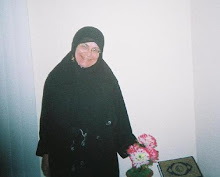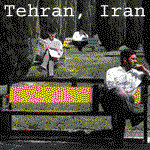Why Do You Dress Like That?"

In these times, I keep meeting sister’s that feel that modest dress and the hijab is either a thing of the past or not for them.
While, to many times, I often do not remark to certain sister’s because of my appreciation for them, but I am posting the following article with the hope, inshaallah that the sister’s out there do understand that modest dress and the hijab is apart of who you are and that it should be worn and the why.
1) The Western culture seems to be obsessed with a very narrow ideal of feminine beauty, and women are derogated if they do not match this ideal. Many women spend hours each day picking just the right outfit and styling their makeup and hair before they will even step out of the house. Any feminist will tell you this obsession with women's beauty and sexuality is bad for women and should be ended. Isn't modest dress a good way for a woman to get off this merry-go-round and to tell people that they will have to judge her by her intelligence, personality, and character, not her appearance?
2) When men dress to be respected, they wear a business suit that covers them to throat, wrist, and ankle, and they keep their hair simple and plain. When women dress to be respected, shouldn't they also cover to throat, wrist, and ankle, and make sure that their hair is not a decoration? Clearly, men are not expected to play the "beauty game". If women want equality with men, shouldn't they take the same attitude to dress that men do?
These are reasons that hijab is appealing to women, any why a woman might choose to dress like that even without looking at the religious aspects.
A religious answer
A Muslim woman wears hijab for the simple reason that God has commanded it in the Quran and Sunna. As Muslims we make the testimony "Muhammad is the messenger of God". The Prophet Muhammad (peace be upon him) would not be a messenger if he did not come with a message, and his message is the Quran. Therefore, we are really saying "The Quran is the message of God". Our faith in God motivates us to obey God's message and that is why we follow what God has commanded in the Quran.
The Quran also tells us to obey the Prophet Muhammad (Surah an-Nisa verse 59), to take what he allows and refrain from what he prohibits (Surah al-Hashr verse 7), to follow his judgments (Surah an-Nisa verse 65), and to abide by his decisions (Surah al-Ahzab verse 36). It also tells us that some of its verses are ambiguous in meaning (Surah Ali Imran verse 7), and that the Prophet Muhammad will explain the meaning of the revelation (Surah an-Nahl verse 44). All of this is the domain of the Sunna. The Sunna records what the Prophet Muhammad said, did, and silently allowed. It shows us how he put the Quran into action. It tells us what he commanded, allowed, prohibited, judged, and decided. And it informs us how he explained the Quran. The Sunna is an important and necessary source of Islamic law.
So what do the Quran and Sunna have to say about women's dress? There are two verses that deal with this question. They are Surah an-Nur verse 31 and Surah al-Ahzab verse 59.
Surah an-Nur verse 31 reads:
And say to the faithful women to lower their gazes, and to guard their private parts, and not to display their beauty except what is apparent of it, and to extend their headcoverings (khimars) to cover their bosoms, and not to display their beauty except to their husbands, or their fathers, or their husband's fathers, or their sons, or their husband's sons, or their brothers, or their brothers' sons, or their sisters' sons, or their womenfolk, or what their right hands rule (slaves), or the followers from the men who do not feel sexual desire, or the small children to whom the nakedness of women is not apparent, and not to strike their feet (on the ground) so as to make known what they hide of their adornments. And turn in repentance to God together, O you the faithful, in order that you are successful.
Surah al-Ahzab verse 59 reads:
O Prophet! Say to your wives and your daughters and the women of the faithful to draw their outergarments (jilbabs) close around them; that is better that they will be recognized and not annoyed. And God is ever Forgiving, Gentle.
These verses contain a total of seven commands for women. Three are related to behavior, which are:
"to lower their gazes"
"to guard their private parts"
"not to strike their feet (on the ground) so as to make known of what they hide of their adornments"
Lowering the gaze refers to not looking at what is forbidden to be seen of men or of other women. According to the Sunna, "what is forbidden to be seen of men" refers to the region from the navel to the knees, while "what is forbidden to be seen of other women" refers to the region from the upper chest to the knees. Guarding the private parts means that the private parts should not be seen or touched except by the spouse. Again, the "private parts" of a woman are from her upper chest to her knees, so this is what should only be seen and touched by her husband. Striking the feet on the ground refers to a practice of the pre-Islamic Arab women that they would walk in such a manner that their ankle bracelets would jangle. More generally, it refers to any kind of posturing that gives knowledge what is hidden.
Note: Surah an-Nur verse 30 commands men to lower their gazes and guard their private parts. As well, the provocative way of walking mentioned for women is a kind of "showing off". The Sunna indicates that "showing off" for men includes wearing gold, silk, or entirely red garments, and letting the garments trail conceitedly on the ground. So in fact, both men and women have been given similar commands in regard to modest behavior and avoiding "showing off".
In addition to the commands about behavior, there are also four commands for women in regard to dress:
"not to display their beauty except what is apparent of it"
"to extend their headcoverings (khimars) to cover their bosoms"
"not to display their beauty except to their husbands, or their fathers..."
"to draw their outergarments (jilbabs) close around themselves"
The commands "not to display their beauty except what is apparent of it" and "not to display their beauty except to their husbands, or their fathers..." are actually two parts of the same command, which is "not to display their beauty beyond what is apparent of it except to the people listed in the verse". So what does "what is apparent of it" mean? This is one of the passages in the Quran that is not clear, and that the Prophet Muhammad needs to explain. His explanation, as given in the Sunna, is that it refers to the face and the hands. Thus, this command means that when they are around men who are not related to them, women should cover everything but their faces and their hands. This is the basic rule of hijab. Obviously, since the hair is not part of the face or the hands, the hair must be covered, so that is why Muslim women cover their hair.
The Quran has also mentioned extending the headcovering (khimar) to cover the bosom. According to the historical records that have been preserved, the pre-Islamic Arab women wore a headcovering called "khimar" which was like a kaffiyah. It covered part of their hair, but left their forelocks, ears, necks, and upper chests uncovered. Thus the command "to extend their khimars to cover their bosoms" involved drawing the khimar securely around the circle of the face and fastening it under the chin so that the ends fell down towards the bosom. This would cover all of the hair, the ears, the neck, and the upper chest. And this is where the headscarf comes from. Muslim women have already been commanded to cover their hair, ears (considered part of the head), necks, and upper chests because none of these are part of the face or the hands, and they are specifically commanded by this clause to use a headscarf (khimar) to accomplish the covering of these parts.
The final command relating to dress is the outergarment (jilbab). Since most people wear coats or other outergarments outdoors, it is not surprising that Muslim women are commanded to wear very modest outergarments outdoors. The jilbab is the very long coat, which covers from the shoulders to the ankles.
Putting it all together:
1. Around her husband, a woman can dress how she wants, because there is no restriction on what a husband can see or touch
2. Around children, other women, and her close male relatives, a woman must cover her "private parts" which is the region from her upper chest to her knees
3. Around non-related men, a woman must cover everything but her face and her hands. This includes a headscarf that covers her hair, ears, neck, and upper chest; clothes that cover her to throat, wrist and ankle and that obscure her figure; and socks and shoes to cover her feet
4. Outdoors, a woman must wear a long coat or similar outergarment that covers her fully
How to wear Hijab
Labels: End of Time, Islam

















2 Comments:
Great information!
May Allah Bless you sister.
Khadaksingh,
Thank you very much
Post a Comment
<< Home